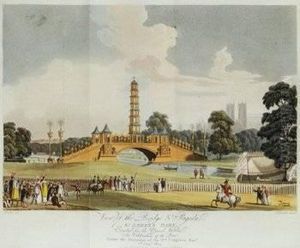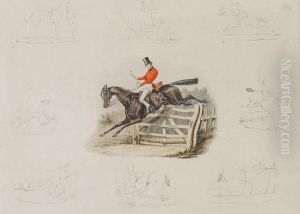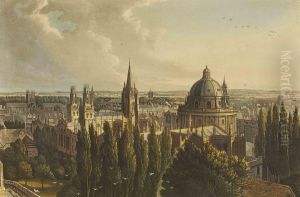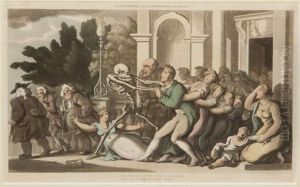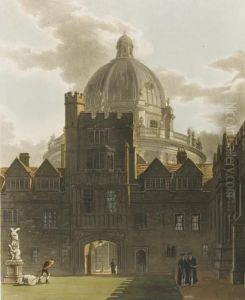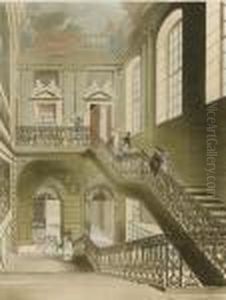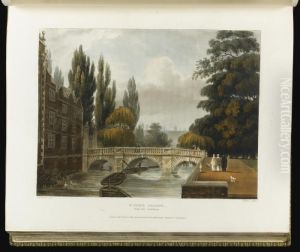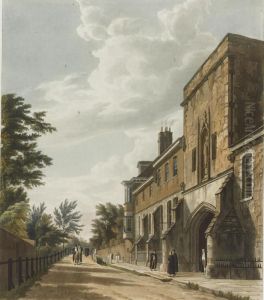Rudolf Ackermann Paintings
Rudolf Ackermann was a notable figure in the art and publishing world, born in 1764 in Stollberg, Saxony, Germany. His early life in Germany involved an apprenticeship in carriage-making, a trade that initially showcased his keen eye for design and detail. However, Ackermann's ambitions extended beyond the confines of carriage craftsmanship. Seeking broader horizons, he moved to Paris and then to London in the late 18th century, where his career took a pivotal turn towards publishing and printmaking.
In London, Ackermann established a print shop in 1795, which quickly evolved into a hub for innovative publishing. He was instrumental in popularizing lithography in England, a printing technique that was relatively new at the time. Ackermann's Repository of Arts, an influential periodical published from 1809 to 1829, became a cornerstone of his legacy. This publication, covering a wide range of subjects including literature, fine arts, fashion, and science, was renowned for its high-quality colored plates. It played a significant role in shaping the tastes and interests of the British middle class during the Regency and Georgian periods.
Ackermann was also known for his educational endeavors. He founded a school for girls, emphasizing the importance of a comprehensive education at a time when such opportunities were limited for women. Beyond his contributions to publishing and education, Ackermann was a patron of the arts. He supported various artists and had a keen interest in advancements in art and technology, which often featured in his publications.
His innovative approach to printmaking and publishing, combined with his commitment to education and the arts, left an indelible mark on the cultural landscape of early 19th-century Britain. Rudolf Ackermann died in 1834, but his influence on the publishing industry and his contributions to the dissemination of art and knowledge continue to be celebrated.

